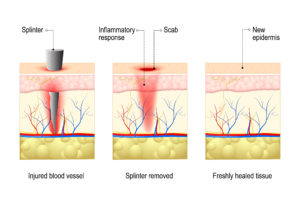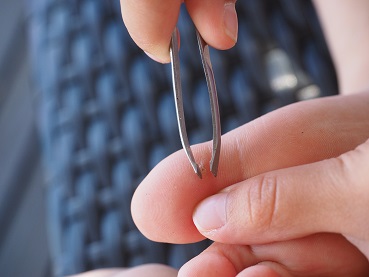 Splinters can enter the body in many different ways and forms. Common items are wood splinters and small pieces of metal. Any splinter is classed as a foreign object in the body. Getting a splinter is not normally serious unless it is a sensitive part of the body like the eyes.
Splinters can enter the body in many different ways and forms. Common items are wood splinters and small pieces of metal. Any splinter is classed as a foreign object in the body. Getting a splinter is not normally serious unless it is a sensitive part of the body like the eyes.
Treating Splinters
After gaining consent by asking the person for permission to help them, put gloves on to reduce the risk of infection. The first thing to do is to clean the area with mild soap and water. This majorly reduces the risk of infection and there is less risk of dirt entering the body.

Small splinters can be very hard to see. Sometimes you cannot remove them, but if not then it will usually work its way out in a few days. If you can remove it, use a pair of tweezers. Should you try and use your fingers you could end up pushing it further into the body. If it is not fully in the body, sticky tape or a plaster can be stuck on the splinter. Then you can gently pull the splinter out.
Larger splinters can be removed with a sterile needle and tweezers. Where you can see the end of the splinter, carefully grip it with the tweezers pulling it out in the direction that it entered the body. This will hopefully avoid breaking it in two and leaving part of it in there. Sometimes there may be some blood, so always wear gloves just in case. However, a simple plaster should stop the bleeding.
For more information on training courses, visit our “Courses” page which also includes our First Responder and First Person on Scene (FPOS) Courses.
